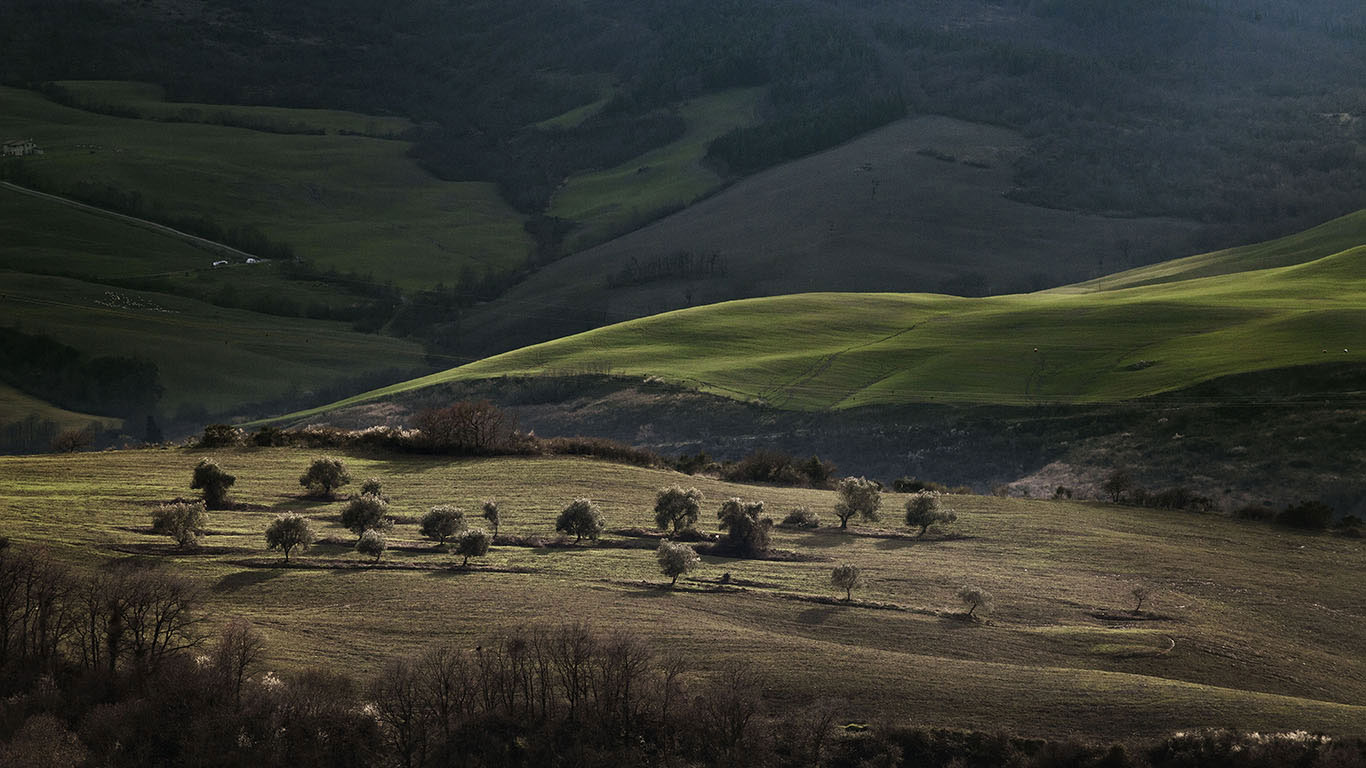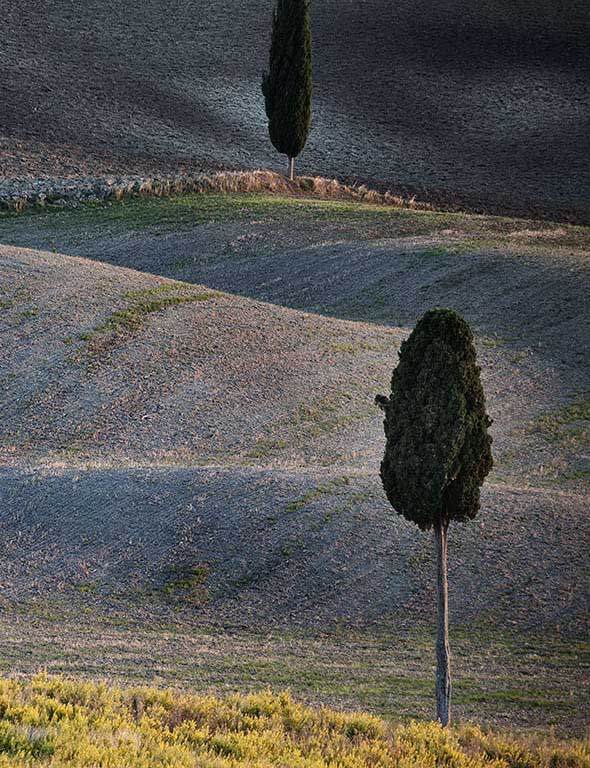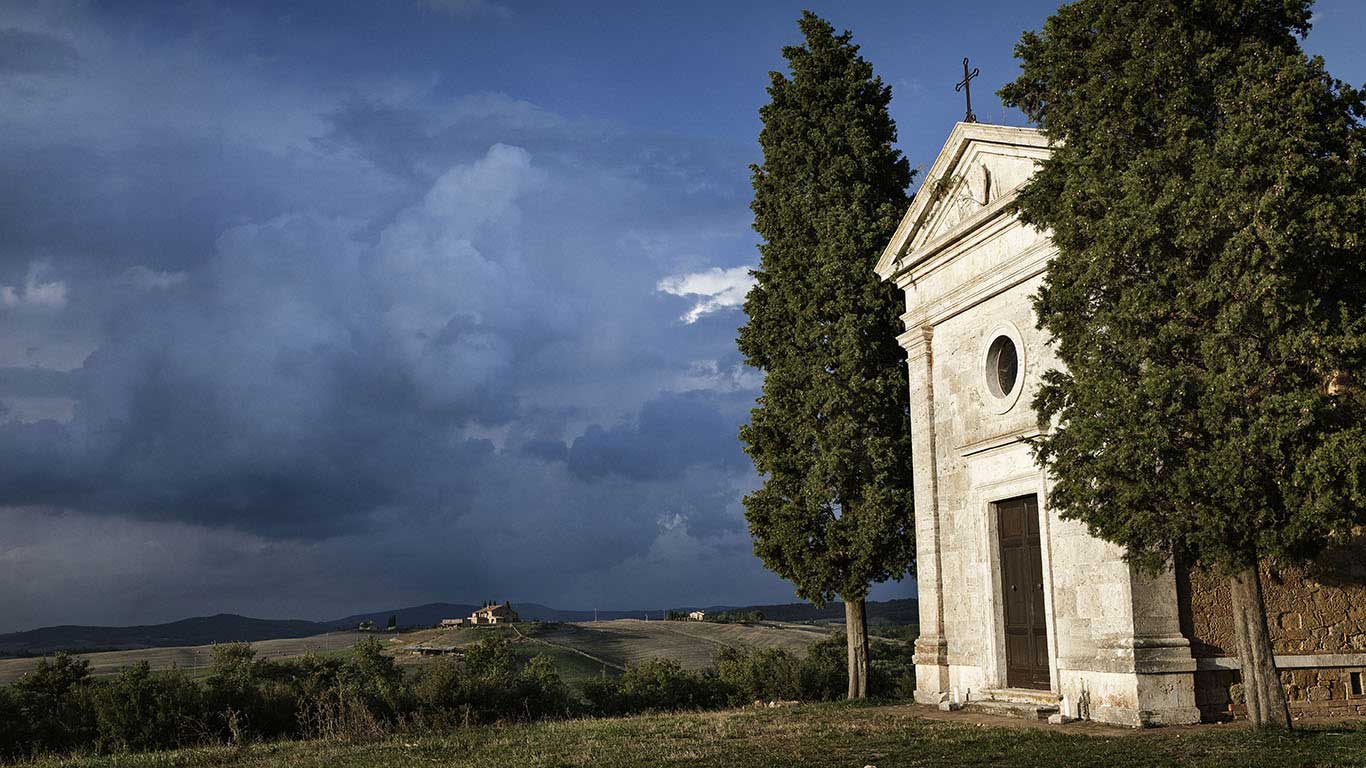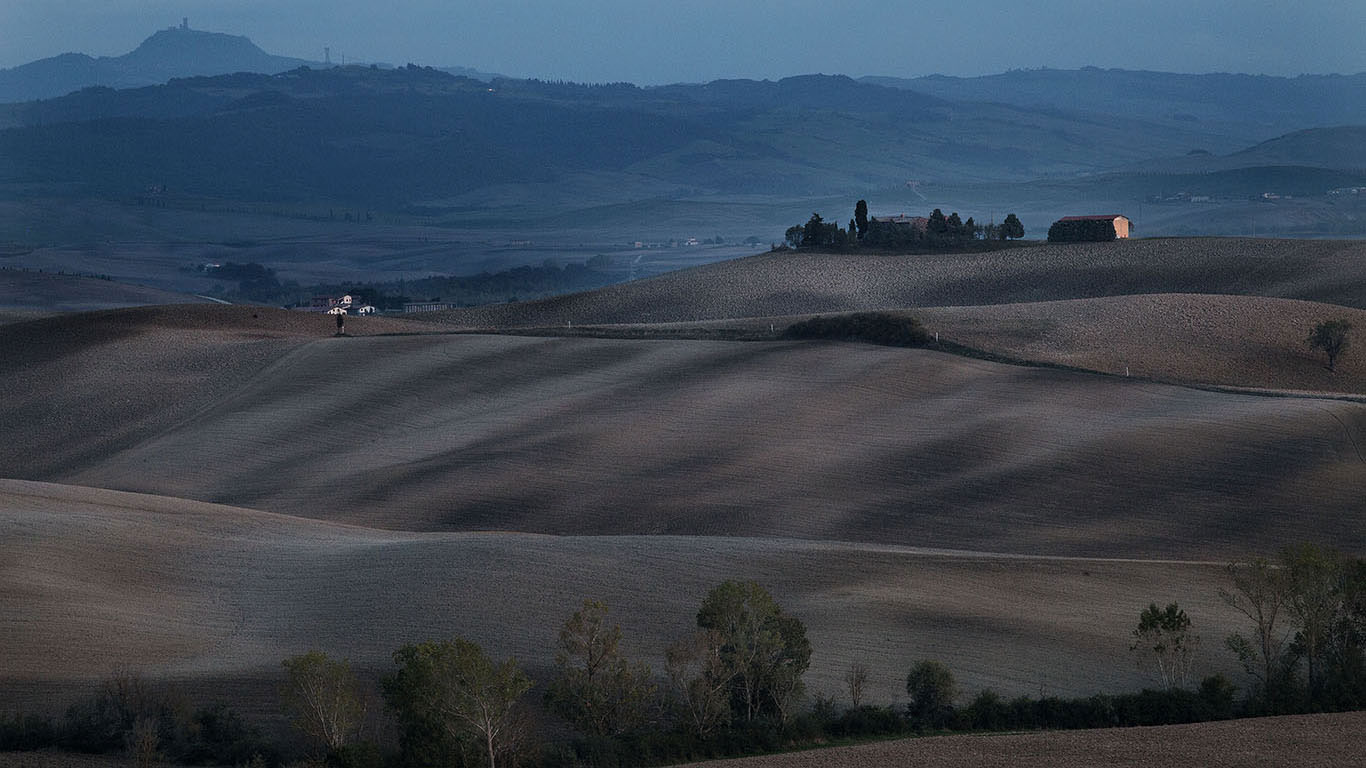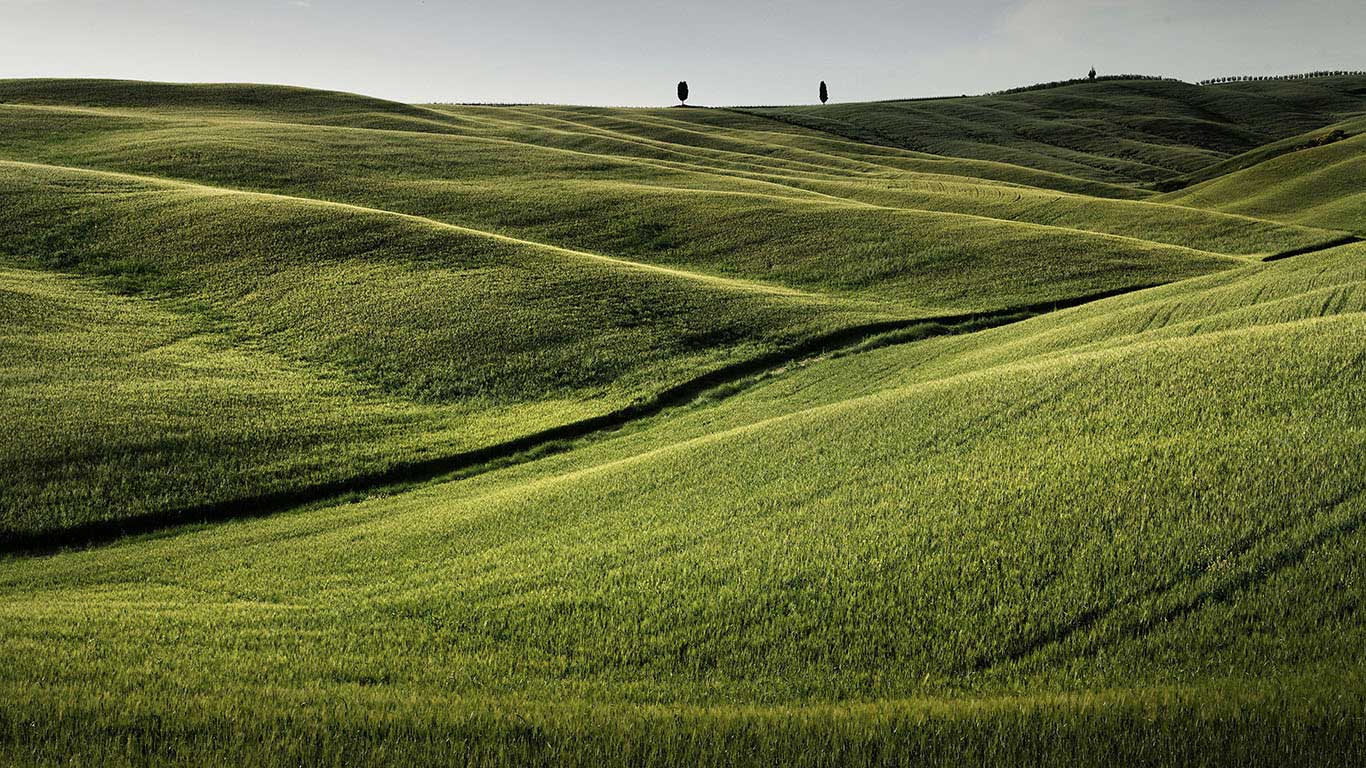THE ORCIA VALLEY
The Orcia Valley, is an extraordinary mix of art, history, landscapes and surprising natural elements, but also a proof of the people who live and lived here.
The Unesco, in 2004, declared this fascinating Orcia Landscape as part of the World Heritage Destination List.
Travellers of these unique places will be surprised by the natural scenery in front of their eyes: wood spots alternated to clay hills well cultivated with olive tree groves and vineyards interrupted by medieval stone houses, farmhouses and towers that are isolated on the tranquillity of the fields.
The five town of this area Montalcino, Pienza, San Quirico d'Orcia, Castiglione d'Orcia and Radicofani create the Orcia Valley Park, with the aim of protecting and promoting this precious natural heritage.
The wine and food production is one of the most powerful point of the Orcia Valley: the Pecorino cheese of Pienza, the honey of the Orcia Valley , the extra virgin olive oil of Castiglione d'Orcia, the Cinta Senese salami and all great wines produced here such as the famous Brunello of Montalcino and the recent DOC Orcia.
PIENZA
P ienza was created by the Pope Pio II, he wants to restore the old native village asking to Bernardo di Matteo Gambardelli, called the Rossellino, to start the rebuilding. This old village has been recognised as an Unesco town in 1996, and still today represents a model of Renaissance town in the way it was rationally projected and how prospective has been used on squares, spaces and palaces.
Among all works we can admire the Saint Mary Cathedral or the so called Dome of Pienza; it represents a rare and delicate balance of gothic shapes with the Renaissance period tools. Inside there are many works from the Siena School of art and a magnificent altar attributed to Rossellino.
Piccolomini Palace, inspired to Rossellino by the Rucellai Palace in Florence, has been the Pope residence. Today it is a museum where are conserved many relics of the Piccolomini family. On the central square we can find the Borgia Palace, given by the Pope to the cardinal Rodrigo Borgia, that became Pope Alexander VI and established there his residence. Inside we can find the rooms of the Diocesan Museum where there is a precious collection of medieval and modern works coming from the Cathedral and from the ancient territory of the Pienza Diocese.
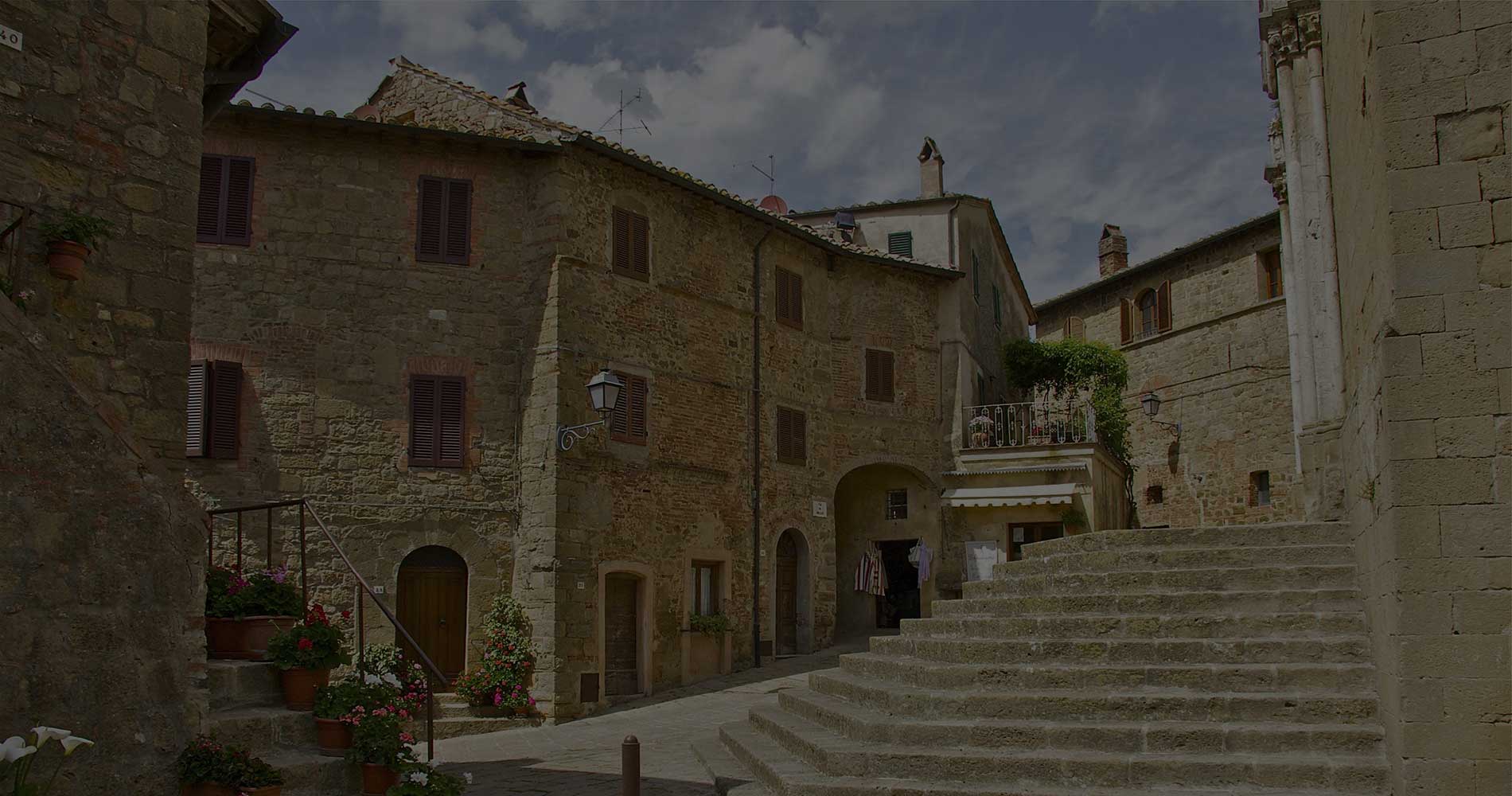
MONTICCHIELLO
Monticchiello is a small village under the Pienza municipality. This village (only 200 inhabitants) has roman origin and if admired from the countryside, we can notice its tower and walls that in the past protected the village. Here we can feel like if the time is stopped, a small architectural jewel that astonishes all tourist from around the world.
In July and August there is the Poor Theatre representation, an old institution (in 2016 will be the 50th edition). The citizens of Montichiello put on the scenes examples of short stories about typical farm daily life acted with a Tuscan local dialect and they are applauded by tourists from all around the world.
SAN QUIRICO D'ORCIA
S
an Quirico should be visited.
The Church of Collegiata, the Chigi Palace (XVII century), the Pretorio Palace, the ancient Spedale di Santa Maria della Scala (XII century ) are some historical destinations to be admired and known in this natural, quiet and harmonic context.
The Horti Leonini, italian gardens renovated by Diomede Leoni around 1540 da Diomede Leoni, host a contemporary sculptures exhibition.
Few km away from San Quirico, you can find the historical village of Bagno Vignoni, famous for its big square with the medieval thermal bath, where the hot water coming from the natural springs arrives and creates an incredible atmosphere for all visitors.
RADICOFANI
R adicofani is the town of Ghino di Tacco, the gentle bandit that on 1300 A.C. dominates all the area around making thefts to all people who walked along his properties and leaving them only the necessary to survive. The ruins of the Fortress are good attestation of a long history rich on defensive walls and towers used to control the area.
The Radicofani area is crossed for 15km by the ancient Francigena way and it has been classified as Orange Flag from Italian Touring Club. Don’t miss the Church of San Pietro, S. Maria Assunta and S.Agata that preserve an important collection of works from the School of Siena.
In September there is the Palio del Bigonzo, an historical representation linked to the plantation of the grapevine and it shows the rivalry of the 5 districts of Radicofani.
In the nearby you can find Contignano, in August there is the famous Sagra del Raviolo (filled tuscan pasta festival), you cannot miss this event!
MONTALCINO
M
ontalcino is not only Brunello!
It’s a fascinating medieval village surrounded by a wall and dominated by an ancient castle built with architectural perfection. Everything has been conserved as on the XVI century and the panorama we can admire is something extraordinary.
This town offers a big choice of historical and cultural activities: the Fortress, often used as place for cultural events, the long and tight tower of Prior Palace, location of the Municipality and Piazza del Popolo, with its nice gothic loggia. Other places to be visited are the Palace of the bishop called Palazzo Vescovile and the churches of Sant' Agostino, Sant' Egidio and San Francesco, The Diocesan Museum of sacred art ant the Museum of the Glass, situated inside the Poggio alle Mura Castle that hosts a collection of tools for the glass decoration and works from the Egyptians, through the Roman age until the great artists from Venice.
Naturally you can’ t miss a Brunello of Montalcino taste at the numerous wine houses and winebars, or why not, a visit to one of the most famous cellar in Montalcino.

